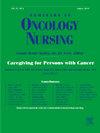癌症患者的处理速度:一个概念分析。
IF 2.3
4区 医学
Q1 NURSING
引用次数: 0
摘要
目的:加工速度是一个认知领域,是认知老化的重要预测指标。它经常在癌症患者中恶化,与其他领域的衰退共同发生,包括注意力、执行功能和记忆力,并对健康结果产生负面影响。然而,缺乏清晰的概念限制了精确评估和有效护理干预的发展,以提高处理速度。因此,本概念分析旨在通过对癌症背景下的属性、前因和后果的细致定义,彻底分析和阐明处理速度。方法:采用Walker和Avant法。从PubMed、CINAHL和APAPsycINFO中识别记录。结果:加工速度的定义属性包括识别给定感官刺激的熟练程度和速度,基于识别做出决策的能力和速度,以及用动作执行决策的能力和速度。处理速度的前因包括衰老、大脑连接、精细运动功能、健康状况、癌症和癌症治疗。处理速度的结果包括认知能力。结论:明确了处理速度的概念,可以完善评估工具和护理干预措施,以确保在癌症患者的护理中全面捕捉其全面性,方便沟通。对护理实践的启示:该分析证实了处理速度是癌症护理中认知功能的关键领域,需要量身定制的评估和干预策略。研究结果强调需要更新临床护理实践,使用改进的工具来评估处理速度,使肿瘤科护士能够实施有针对性的干预措施,解决与癌症相关的认知能力下降问题,并提高癌症患者的健康结果。本文章由计算机程序翻译,如有差异,请以英文原文为准。
Processing Speed in Patients with Cancer: A Concept Analysis
Objectives
Processing speed is a cognitive domain and a crucial predictor of cognitive aging. It frequently deteriorates in patients with cancer, co-occurring with declines of other domains, including attention, executive function, and memory, and negatively impacts health outcomes. However, lack of clarity of the concept limits the development of precise assessments and effective nursing interventions to improve processing speed. Therefore, this concept analysis aims to thoroughly analyze and clarify processing speed with nuanced defining attributes, antecedents, and consequences in the cancer context.
Methods
Walker and Avant’s method was used. Records were identified from PubMed, CINAHL, and APAPsycINFO.
Results
Defining attributes of processing speed include the proficiency and speed to recognize given sensory stimuli, to make decisions based on the recognition, and to implement the decision with movement. Antecedents of processing speed include aging, brain connectivity, fine motor function, and health conditions, with cancer and cancer treatment. Consequences of processing speed include cognitive capability.
Conclusions
With the clarified concept of processing speed, assessment tools and nursing interventions can be refined to ensure comprehensively capturing its full scope and facilitating communication in the care of patients with cancer.
Implications for Nursing Practice
This analysis confirms processing speed is a critical domain of cognitive function in cancer care, requiring tailored assessment and intervention strategies. The findings highlight the need to update clinical nursing practices with refined tools to evaluate processing speed, enabling oncology nurses to implement targeted interventions that address cancer-related cognitive decline and enhance health outcomes of patients with cancer.
求助全文
通过发布文献求助,成功后即可免费获取论文全文。
去求助
来源期刊

Seminars in Oncology Nursing
Nursing-Oncology (nursing)
CiteScore
3.40
自引率
0.00%
发文量
68
审稿时长
45 days
期刊介绍:
Seminars in Oncology Nursing is a unique international journal published six times a year. Each issue offers a multi-faceted overview of a single cancer topic from a selection of expert review articles and disseminates oncology nursing research relevant to patient care, nursing education, management, and policy development.
 求助内容:
求助内容: 应助结果提醒方式:
应助结果提醒方式:


